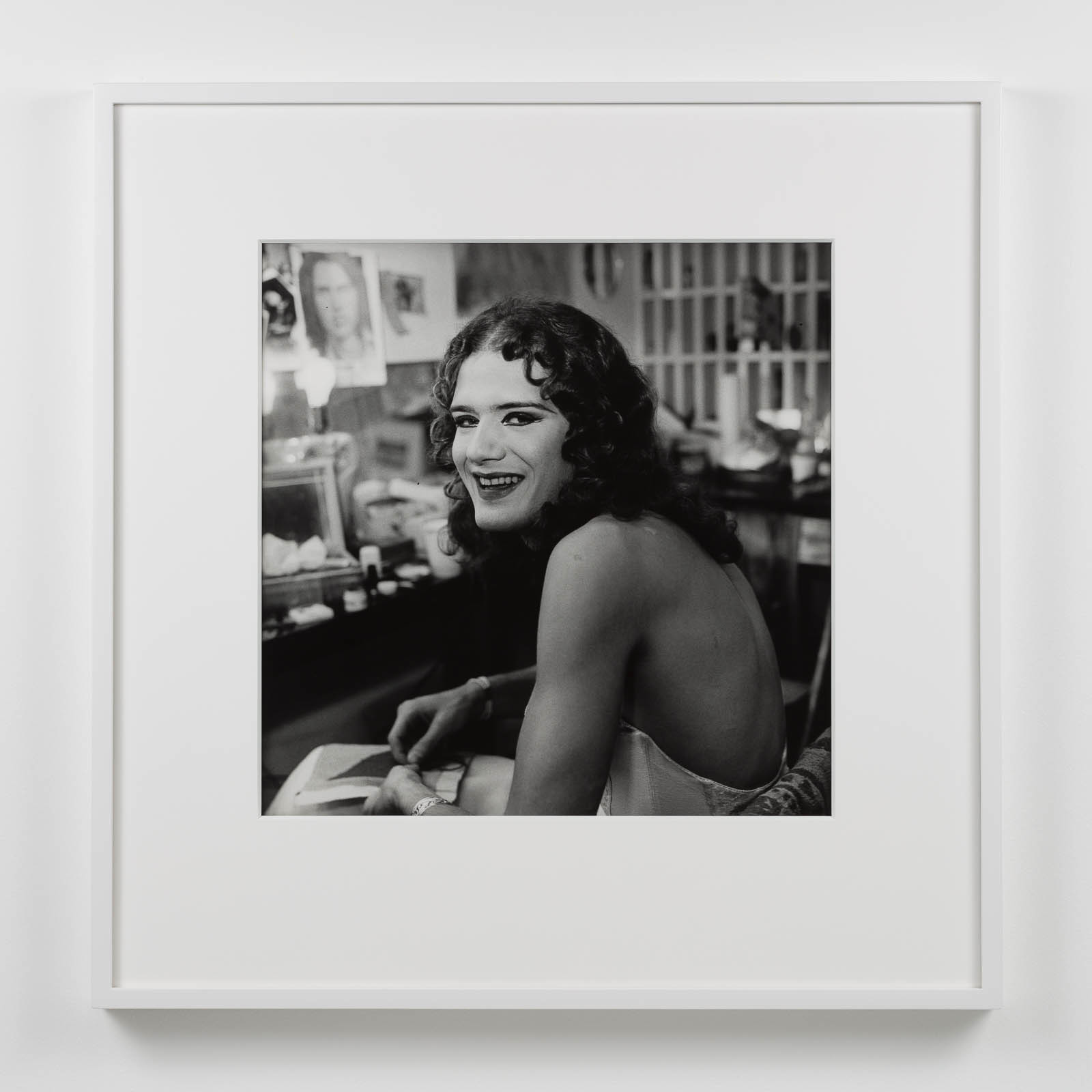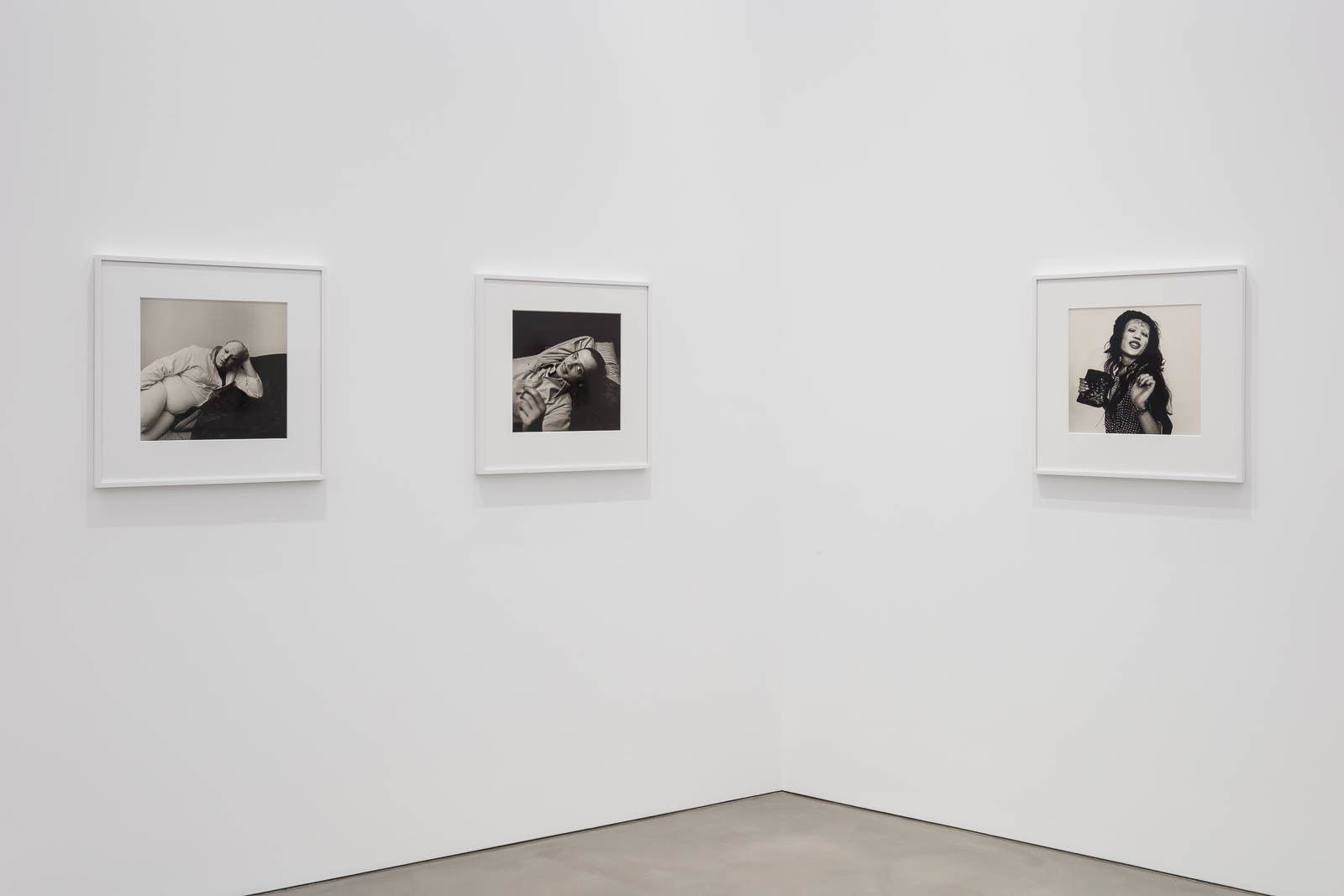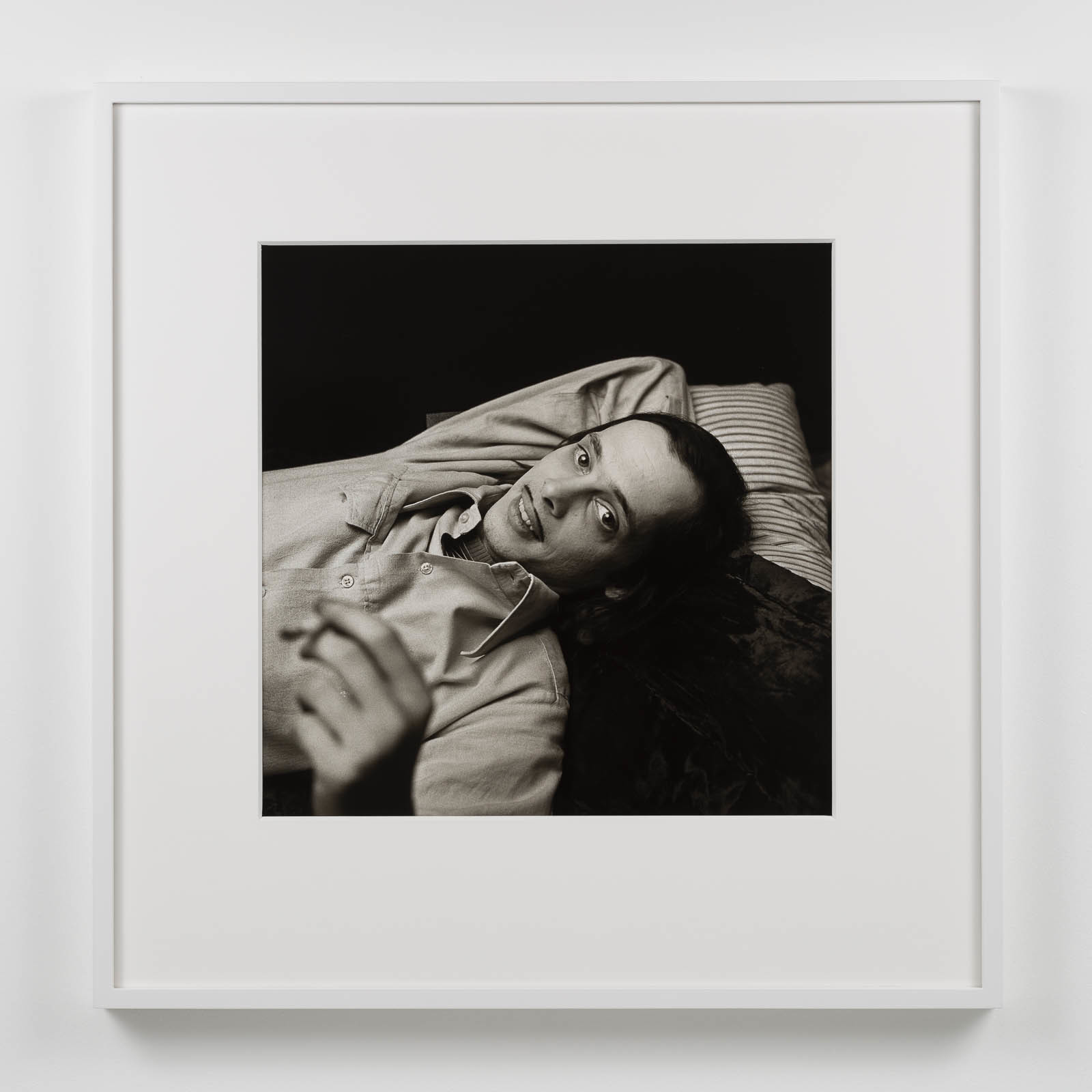Fresh off a retrospective at Pace Gallery in New York last summer, Peter Hujar has solidified his status as an icon of contemporary photography, thanks to the unfaltering cultural interest in queer subcultures of pre-AIDS New York. His black and white images—mostly portraits of his loved ones or eccentric figures of the downtown scene—remain a portal to a time that some were privileged enough to witness, and many could not access due to age, race, or nationality. Hujar passed away from the AIDS pandemic that affected queer lives first and foremost, and his death became the subject of a devastating work produced by his lover-cum-friend David Wojnarowicz.
“Backstage”, the ongoing exhibition at Maureen Paley in London, is significantly less somber in tone, save from a self-portrait titled Seated Self-Portrait Depressed (1980). The main gallery of “Backstage” primarily features portraits of queer performers preparing for the stage, whether that means applying make-up, putting on a gown, or getting into full drag. As theorist José Esteban Muñoz reminds us, performance can often mean forced labor for minoritarian subjects, and queer people of color more specifically. Despite this, Hujar’s portraits capture moments of queer bliss, attributed to the photographer’s intimate kinships with his subjects. Take Georg Osterman Backstage at “Camille” (1974) for example. Instead of underscoring the feminine “illusions” of Georg Osterman’s drag (or his gendered body parts), Hujar centers the work on his mug. Osterman smiles shyly to the camera, but one can sense a comfort in his lack of need to perform. Osterman is neither as poised as his labor often requires of him to be, nor entirely defenseless under the photographer’s gaze.
Hujar’s black and white, high-contrast images are of a great function here. The formal elements of his photography highlight the authority and glamour of stage costumes. The lavish jewelry in Black-Eyed Susan (1974), the floral robe in Cockette (Bearded Cockette) (1971), and the leopard turban in Mario Montez Backstage at the Palm Casino Revue (1974) are all objects that flicker with potentiality. They are the necessary mise-en-scenes in creating queer worlds and they amplify the feelings of ecstasy and extravagance associated with queer creative expressions.
 Installation view of Peter Hujar’s “Backstage” at Maureen Paley, London, 2021. © 1987 The Peter Hujar Archive LLC. Image courtesy of Maureen Paley, London, and The Peter Hujar Archive.
Installation view of Peter Hujar’s “Backstage” at Maureen Paley, London, 2021. © 1987 The Peter Hujar Archive LLC. Image courtesy of Maureen Paley, London, and The Peter Hujar Archive.
Hujar’s portraits reveal how closely linked the creative networks of NYC’s downtown scene were at the time. Backstage offers a glimpse of Hujar’s personal and professional relationships with prominent figures of the subculture. The main gallery features the portrait images of two queer icons, Divine and John Waters, more or less striking the same pose. Both of them lie down sideways, with their left arms supporting their heads. Divine is, of course, John Water’s number one actor, as the two have collaborated in numerous films including Pink Flamingos (1979) and Hairspray (1988). By replicating the same pose, the two friends diverge from the asymmetric power dynamics of director-muse relationships.
 Peter Hujar, John Waters (I), 1975. Pigmented ink print, 37.5 x 37.5 cm. © 1987 The Peter Hujar Archive LLC. Image courtesy of Maureen Paley, London, and The Peter Hujar Archive.
Peter Hujar, John Waters (I), 1975. Pigmented ink print, 37.5 x 37.5 cm. © 1987 The Peter Hujar Archive LLC. Image courtesy of Maureen Paley, London, and The Peter Hujar Archive.
 Peter Hujar, Divine, 1975. Pigmented ink print. © 1987 The Peter Hujar Archive LLC. Image courtesy of Maureen Paley, London, and The Peter Hujar Archive.
Peter Hujar, Divine, 1975. Pigmented ink print. © 1987 The Peter Hujar Archive LLC. Image courtesy of Maureen Paley, London, and The Peter Hujar Archive.
The second gallery is less focused and departs from the central theme of “Backstage.” Still, it includes essential works from Hujar’s oeuvre, including a portrait of Fran Lebowitz. Overall, the exhibition reminds us of a bygone era that established the foundations of Western queer culture today.
PETER HUJAR
“Backstage”
15 May – 13 June 2021
Open by appointment only, Wednesday – Sunday 11 am – 6 pm
book here


 Installation view of Peter Hujar’s “Backstage” at Maureen Paley, London, 2021. © 1987 The Peter Hujar Archive LLC. Image courtesy of Maureen Paley, London, and The Peter Hujar Archive.
Installation view of Peter Hujar’s “Backstage” at Maureen Paley, London, 2021. © 1987 The Peter Hujar Archive LLC. Image courtesy of Maureen Paley, London, and The Peter Hujar Archive. Peter Hujar, John Waters (I), 1975. Pigmented ink print, 37.5 x 37.5 cm. © 1987 The Peter Hujar Archive LLC. Image courtesy of Maureen Paley, London, and The Peter Hujar Archive.
Peter Hujar, John Waters (I), 1975. Pigmented ink print, 37.5 x 37.5 cm. © 1987 The Peter Hujar Archive LLC. Image courtesy of Maureen Paley, London, and The Peter Hujar Archive. Peter Hujar, Divine, 1975. Pigmented ink print. © 1987 The Peter Hujar Archive LLC. Image courtesy of Maureen Paley, London, and The Peter Hujar Archive.
Peter Hujar, Divine, 1975. Pigmented ink print. © 1987 The Peter Hujar Archive LLC. Image courtesy of Maureen Paley, London, and The Peter Hujar Archive.